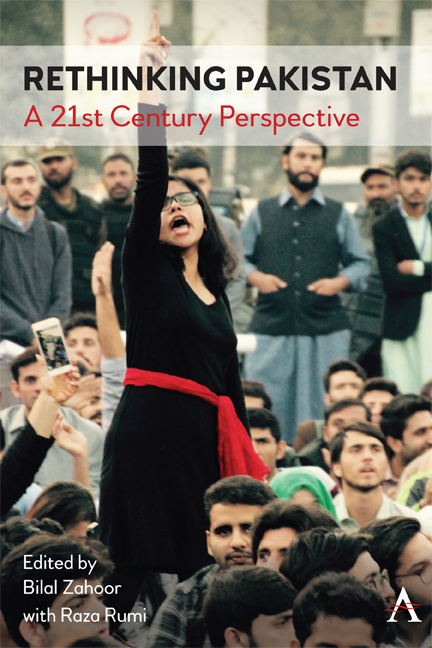Book contents
- Frontmatter
- Dedicated
- Contents
- Acknowledgements
- Introduction
- Part I Identity, Religion and Radicalisation
- Part II Development, Reform and Governance
- Part III Rights, Repression and Resistance
- Part IV Sex, Gender and Emancipation
- Part V Conflict, Diplomacy and Foreign Policy
- Contributors
- Bibliography
- Index
Chapter 3 - The Conflicted Self: The Existential Battle between being Muslim and Islamic in Pakistan
Published online by Cambridge University Press: 20 January 2022
- Frontmatter
- Dedicated
- Contents
- Acknowledgements
- Introduction
- Part I Identity, Religion and Radicalisation
- Part II Development, Reform and Governance
- Part III Rights, Repression and Resistance
- Part IV Sex, Gender and Emancipation
- Part V Conflict, Diplomacy and Foreign Policy
- Contributors
- Bibliography
- Index
Summary
Early Political and Social Ethos of Muslim Rule in South Asia
According to a 2011 Gallup-Pakistan poll, 59 per cent of Pakistanis chose to identify themselves as Muslims first. Just 22 per cent described themselves as Pakistani first, a majority which belonged to the country's “minority” communities (mainly Christian and Hindu).
Over 95 per cent of Pakistanis are Muslim. They have been an overwhelming majority here since Pakistan's inception on 14 August 1947, when Pakistan was carved out of India as a separate country. Till 1947, India had been under British colonial rule for almost a hundred years. When the British departed, they decided to split India into three parts. Regions with a Muslim majority (but noteworthy Hindu minorities) became Pakistan and the Hindu-majority areas (with significant Muslim minorities) became the Republic of India.
The Muslim-majority province of East Bengal became a part of Pakistan as well and came to be referred to as East Pakistan. Like the rest of Pakistan, then known as West Pakistan, East Pakistan too had a Muslim majority, but it also had an overwhelming ethnic Bengali population. West Pakistan, on the other hand, was a more ethnically diverse region. Its most prominent ethnic groups included Punjabis, Sindhis, Pashtuns and Baloch. It also consisted of thousands of Urdu-, Punjabi-and Guajarati-speaking Muslim migrants who had poured in from areas that had become part of postcolonial India. The East Pakistan region was over 2,000 km removed from West Pakistan. The vast territory that became the Republic of India lay between the two wings.
Hindus were an almost absolute majority in India till the first Muslim incursions into the region in the eighth century CE. But these invasions were restricted to what is today the Sindh province of Pakistan. They were led by the armies of the Arab Umayyad Empire which was also Islam's first major dynasty after the religion burst out of Arabia in the seventh century CE. The Muslim minority of India grew significantly during the long Muslim rule in the region from the early thirteenth to the mid-nineteenth centuries. Nevertheless, Hinduism remained the region's dominant religion in terms of numbers.
- Type
- Chapter
- Information
- Rethinking PakistanA 21st Century Perspective, pp. 41 - 50Publisher: Anthem PressPrint publication year: 2020



